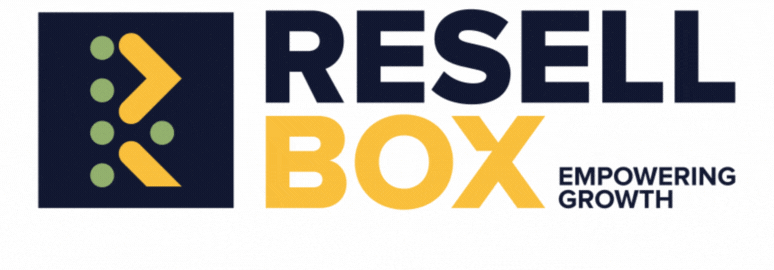Introduction
In the fast-changing digital world, web application security is more critical than ever. Increasing cyber threats and the exploitation of vulnerabilities by hackers have significantly impacted businesses and users. From personal data breaches to ransomware attacks, web applications face constant threats. Web developers, security professionals, IT managers, and digital marketers must prioritize web application security to ensure protection.
In this blog post, we’ll dive into the Securing Web Application Technologies checklist. This checklist equips you with the knowledge and tools needed to protect your web applications. Here, we go over why you should secure your web apps so seriously, its key benefits, common challenges, tools and techniques to secure the applications, and real-world examples that show how best practices could be implemented in real life.
Let’s see how you can harden your web application’s defences.
Table of Contents:
- What is the Securing Web Application Technologies (SWAT) Checklist?
- Key Benefits of Securing Web Applications
- Common Challenges in Web Application Security
- Tools and Techniques to Secure Web Applications
- Practical Takeaways and Examples
- Conclusion: Wrapping it Up

What is the Securing Web Application Technologies (SWAT) Checklist?
The Securing Web Application Technologies (SWAT) checklist is a comprehensive guide to help businesses, developers, and security professionals secure their web applications. This checklist focuses on every aspect of web application security, from design and development to deployment and maintenance. The SWAT checklist aims to mitigate potential risks, including data breaches, unauthorized access, and other cyber threats.
It involves several security practices, tools, and techniques applied in assessing and strengthening the security of a web application. This involves applying all steps in the SWAT checklist as a continuous and proactive approach by developers and security teams to address application vulnerabilities. The main thing is to note that this process is not done only once, but the whole procedure demands updates and regular monitoring.
Key Benefits of Securing Web Applications
Web applications contain personal data, payment details, and intellectual property. Securing such applications will offer a myriad of benefits, protecting users while ensuring the success of your business as a whole. Some of the key benefits include:
- Data breach protection
- Compliance with Regulation
- Reduced Downtime and Loss of Revenue:
- Building Customer Trust:
A data breach can lead to lawsuits, reputational damage, and significant financial loss often beyond repair. Securing your web application protects the customer data–passwords, payment details, and personally identifiable information from unauthorized access.
Security standards and compliance regulations, such as the General Data Protection Regulation (GDPR), the Health Insurance Portability and Accountability Act (HIPAA), and the Payment Card Industry Data Security Standard (PCI DSS), are common in many industries. Businesses need to have proper security measures in place. If not, fines and legal issues arise. The more frequently you secure your web applications, the more likely you are to comply with these industry-specific regulations.
Cyber-attacks can result in application downtime, which makes your web services unavailable to users. This means a direct hit on revenue, especially for e-commerce businesses. A secure web application minimizes the risk of being attacked or taken offline, helping ensure continuous service availability and preventing financial losses.
The users of the web are becoming increasingly concerned about their privacy and security online. If your application demonstrates a commitment to securing user data, it can significantly enhance your reputation and customer trust. This, in turn, fosters customer loyalty, increases brand credibility, and can even lead to higher conversion rates.
Common Challenges in Web Application Security
Although securing web applications is important, there are many challenges that make this process difficult. Overcoming these challenges is crucial to ensure that the best security practices are adopted during the development and maintenance phases.
- Complexity of Modern Web Applications:
- Insufficient Skilled Personnel:
- Changing Landscape of Threats
- Lack of Testing and Audits:
As the web application continues to evolve, it gets more complicated by including numerous layers of functionality, like APIs, third-party integrations, and diversified user access levels. Thus, the more complex it is, the harder it is monitored and secured.
Finding and retaining skilled cybersecurity professionals is one of the biggest challenges with which several organizations might face. Without experienced persons managing security testing, vulnerability assessment, and responding to incidents, organizations may not be able to implement security measures.
The cybersecurity landscape is constantly evolving, with new attack methods emerging daily. Attackers never stop innovating, with sophisticated techniques like SQL injection, cross-site scripting (XSS), and zero-day vulnerabilities. Continuous learning, monitoring, and updating of security measures is necessary to keep up with these threats.
One common mistake is inadequate testing. Many organisations fail to conduct regular vulnerability assessments, allowing critical weaknesses to go unnoticed until it’s too late. Penetration testing, vulnerability scanning, and security audits should be conducted on a periodic basis to identify the gaps.
Tools and Techniques to Secure Web Applications
Secure a web application is achieved through a wide array of tools and techniques. Here are some of the most crucial:
- Encryption:
- Authentication and Authorization
- Security Updates:
- Web Application Firewalls:
- Penetration Testing:
- Secure Coding Practices:
Encrypting critical data is one of the most basic security measures. Data in motion and data at rest need to be encrypted not to be intercepted without permission. The use of strong encryption makes sure that if data is intercepted, it’s unreadable.
Implement strong authentication mechanisms for users, such as multi-factor authentication. Additionally, role-based access control will ensure that unauthorized persons cannot access certain portions of your application. This reduces the chances of unauthorized access to sensitive data.
Your web application, along with all associated software, CMS platforms, plugins, and frameworks, should be regularly updated with security patches to address known vulnerabilities. Wherever possible, use of automation is necessary to keep reducing the exposure due to un-updated applications.
A WAF examines and filters all HTTP traffic leaving your web application for the rest of the world. It successfully blocks malicious traffic such as SQL injection, cross-site scripting, and other prevalent attack vectors. A WAF acts as yet another layer protecting attackers from hitting your application.
Regular penetration tests simulate cyber-attacks on your application to identify vulnerabilities. Pen testing helps identify security weaknesses that could be exploited by real attackers, and you can address them before they become a threat.
Secure coding practices are the most important things for web developers to adhere to. This includes proper input validation, output encoding, secure error handling, and avoiding hard-coded passwords. Useful frameworks can be found in the OWASP Secure Coding Practices guide.

Practical Takeaways and Examples
Understanding and implementing web application security best practices is key to reducing vulnerabilities. Here are a few practical examples:
- Example 1: Using SSL/TLS encryption for e-commerce websites. E-commerce websites should implement SSL certificates to encrypt payment details and personal information, ensuring secure transactions. This prevents theft and develops confidence in that brand.
- Example 2: Two-factor Authentication (2FA). Social network sites with hosted user-generated content should deploy two-factor authentication, which provides further security by having an extra barrier to overcome during unauthorized login should the log in credentials become exposed.
- Example 3: Engage in Periodic Penetration Testing for SaaS-Based Application A software-as-a-service product company must perform periodic penetration testing that identifies vulnerabilities in the service and gets them fixed before hackers can exploit them.
Conclusion: Wrapping it Up
Securing web applications is an ongoing process; it starts during design and continues through deployment. With this approach, by using the SWAT checklist for securing web application technologies, you can safeguard your applications against changing cyber threats. Continuous testing, regular updates, and strong security tools are essential to keeping web applications secure, protecting user data and maintaining customer trust. We, at Resellbox, know how important it is to have strong web security.
We offer you the tools and resources that you need to keep your applications secure. We help you to prioritize security, stay ahead of potential risks, and keep your applications resilient and secure.


